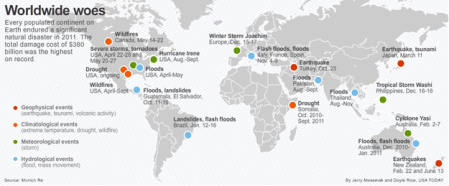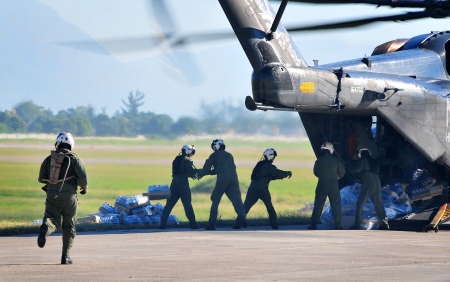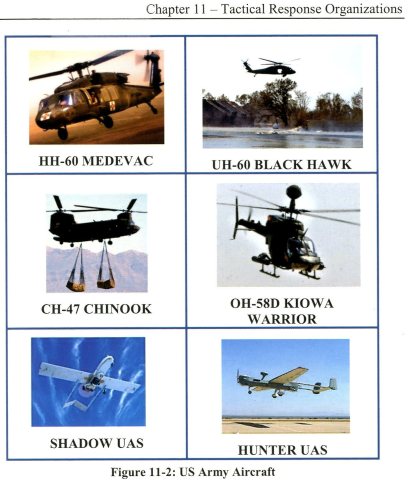Having family and friends who live on the coastlines of North Carolina, South Carolina, Florida, and the Gulf Coast, I find myself glued to the weather stations following the latest hurricane reports whenever late August rolls around.
 Today, folks along the Gulf Coast and particularly Plaquemines Parish outside of New Orleans are dealing with the wind and flood damage of slow-moving Hurricane Isaac that made landfall on the seventh anniversary of the devastating Hurricane Katrina on August 28, 2005.
Today, folks along the Gulf Coast and particularly Plaquemines Parish outside of New Orleans are dealing with the wind and flood damage of slow-moving Hurricane Isaac that made landfall on the seventh anniversary of the devastating Hurricane Katrina on August 28, 2005.
Image: Advance projection of the track of Hurricane Isaac as of August 27, 2012, vs. Katrina in 2005. Source: University of Miami/ Rosenstiel School of Marine & Atmospheric Science
Thus, it seems like a good time to talk about the great work of the U.S. Geological Survey (USGS) and their role in hurricane response and prediction of their impact.
The USGS Mission
The USGS is a bureau of the US Department of the Interior and its mission is to “provide the Nation with reliable, impartial information to describe and understand the Earth. This information is used to minimize loss of life and property from natural disasters; manage water, biological, energy, and mineral resources; enhance and protect the quality of life; and contribute to wise economic and physical development.”
The Natural Hazards part of the USGS mission sounds like the latest natural disaster movie script from Hollywood where the brilliant scientist comes in with the latest findings of pending disaster and how to avert it (Quite often, that “brilliant scientist” comes from USGS.)
The USGS Natural Hazards mission areas include:
The Coastal and Marine Geology Program conducts research on changes in the coastal and marine environment, whether naturally occurring or human induced. Contributing to the Natural Hazards mission, the program supports research on marine geohazards including earthquakes, tsunami, and underwater landslides, and on coastal change hazards from sea-level rise, erosion, and extreme storms including hurricanes.
Typical USGS Hurricane Support
While the National Oceanic and Atmospheric Administration (NOAA) and its National Weather Service is responsible for tracking and predicting the course of hurricanes (See the National Hurricane Center), the USGS’s research “focuses on understanding the magnitude and variability of the impacts of hurricanes and extreme storms on the sandy beaches of the United States. The overall objective is to improve the capability to predict coastal change that results from severe storms” and to “support management of coastal infrastructure, resources, and safety.
USGS science helps identify areas that may need to be evacuated due to their extreme vulnerability to hurricanes or where preventive measures are needed to mitigate some of their damaging effects. When hurricanes strike, you can find critical information to help protect lives and property at the U.S. Geological Survey (USGS) hurricane website.
After all, according to the U.S. Geological Survey, “More than half of the U.S. population lives within 50 miles of a coast—and coastal populations are increasing. Many U.S. coastal areas, especially the Atlantic and Gulf coasts, will be in the direct path of hurricanes.”
USGS Response to the Hurricanes of 2005
 Science and the Storms: The USGS Response to the Hurricanes of 2005 reports on the many and varied activities performed by the USGS in response to the four major hurricanes—Dennis, Katrina, Rita and Wilma— that hit the United States during that year. Topics vary from flooding and water quality to landscape and ecosystem impacts, from geotechnical reconnaissance to analyzing the collapse of bridges and estimating the volume of debris caused by the hurricanes.
Science and the Storms: The USGS Response to the Hurricanes of 2005 reports on the many and varied activities performed by the USGS in response to the four major hurricanes—Dennis, Katrina, Rita and Wilma— that hit the United States during that year. Topics vary from flooding and water quality to landscape and ecosystem impacts, from geotechnical reconnaissance to analyzing the collapse of bridges and estimating the volume of debris caused by the hurricanes.
From the report we learn that some of the tasks performed by USGS were routine for them. After all, as employees of the Nation’s largest water, earth, and biological science and civilian mapping agency, USGS scientists have been studying hurricanes and hurricane-related impacts for decades:
[USGS scientists] have measured and studied flooding and water quality. They have used the latest technology—from satellite imagery and geographic information systems to lidar (light detection and ranging)—to view and analyze damage to the barrier islands and coastal wetlands that protect people and property. They have examined the effects of hurricanes on land, water, vegetation, and wildlife.
But the impact of the extraordinary 2005 hurricane season on the United States required a new level of study. It was a season of unfortunate hurricane “firsts” from the first year with: 13 hurricanes, 4 hurricanes of them hitting the U.S., and with 3 of them Category 5. This led the USGS scientists to perform “dozens and dozens of other studies that hurricane season,” including the following:
- Examining the cycles of hurricanes and their relation to sea water surface temperature.
- Looking at oil slicks and chemicals in the flood waters and the sediments in and around New Orleans
- Studying the flood protection systems in New Orleans and surrounding areas.
- Recording the effects of the hurricanes on manatees off the coast of Florida and on birds whose fall migration was disrupted by these ferocious storms.
- Analyzing the destruction of bridges and measuring debris.
- Studying the landscape of the Gulf Coast and measuring the enormous changes due to hurricane winds and flooding.
Chapter 1:The Need for Science in Restoring Resilience to the Northern Gulf of Mexico is an essay establishing the need for science in building a resilient coast.
Chapter 2: The Storms of 2005, includes some hurricane facts that provide hurricane terminology, history, and maps of the four hurricanes’ paths. Chapters that follow give the scientific response of USGS to the storms with the analysis and findings, including:
Chapter 3: Rescue and Response, documents the U.S. Geological Survey’s (USGS) humanitarian rescue operations as well as its scientific responses to assess damages from the hurricanes, from the Mississippi River flood-protection system and bridges and to assess the coastal debris, oil slicks, and flooding in New Orleans. Rescue operations by USGS personnel included boat rescue, delivery of food and water to isolated communities, and the geoaddressing of 911 calls, which merited the USGS a Service to America Medal award.
This was one of the more interesting stories in the book, showing how important fast-acting science can be in an emergency. As New Orleans’ streets flooded, emergency response officials suddenly realized that water rescue in a major metropolitan area was not a contingency they had planned for and that many emergency responders could not locate specific streets if they were all underwater, unrecognizable, or unfindable. Thus, the U.S. Geological Survey (USGS) was asked to apply geoaddressing to convert New Orleans street addresses on emergency calls into latitudinal and longitudinal coordinates that could be located by compass and GPS-wielding emergency responders in the field- on boats, in the air, or on land.
The result was a database that USGS built in which each emergency call was represented by a point in a geographic information system (GIS). This data ended up being provided to a variety of emergency personnel and scientists from: the Louisiana Department of Wildlife and Fisheries (LDWF), the Louisiana State Police (LSP), the Louisiana Office of Homeland Security and Emergency Preparedness, Federal Emergency Management Agency (FEMA), Centers for Disease Control and Prevention (CDC), and Louisiana Geological Survey.
Chapter 4: How Technology Helps describes some of the critical technology that enables U.S. Geological Survey scientists to assess conditions before and after storms, including: near real-time geospatial monitoring systems, geospatial support for emergency responders, Web-accessible data, and satellite imagery.
Chapter 5: Landscape Changes documents the more severe changes to the Gulf Coast landscape resulting from these four hurricanes from Alabama to Texas, including plunging hundreds of miles of Louisiana coastline underwater; estuarine damage to barrier islands; erosion of beaches ; and the damages and loss of floodplain forest.
Chapter 6: Ecological Impacts covers the hurricanes’ effects on both vegetation and the animals that depend on Gulf Coast habitats on land and in water. Discussed in this section are migratory birds, coastal marsh vegetation, chenier forests, coastal floodplain forests, mangrove forests, estuaries, and the endangered manatee.
 Image: USGS scientist illustrates the depth of sand deposition (74 inches) from Hurricane Rita in 2005 on Hackberry Beach chenier in Louisiana. Source: USGS Science and the Storms.
Image: USGS scientist illustrates the depth of sand deposition (74 inches) from Hurricane Rita in 2005 on Hackberry Beach chenier in Louisiana. Source: USGS Science and the Storms.
Chapter 7: Aquatic Environments reports on the many studies performed by USGS scientists devoted to analyzing waters affected by the flooding from the storms of 2005 and the chemical composition of contaminated sediments.
Chapter 8: Science and the Storms: the Science Continues is a compilation of relevant ongoing and future hurricane research for restoring a resilient coast.
Epilogue: The epilogue marks the second year anniversary of Hurricane Katrina.
Facts and Figures
Usefully, both English and metric measurements are used in the articles in anticipation of both general and scientific audiences in the United States and elsewhere, and the entire report is peer-reviewed to ensure the integrity and independence of the findings.
Furthermore, the publications is chock full of color photographs, illustrations and graphs, bringing the facts alive and conveying the stark devastation of a hurricane-ravaged coastline, such as before and after photographs of the Chandeleur Islands in Louisiana.
Conclusion
Thus, the purpose of Science and the Storms: The USGS Response to the Hurricanes of 2005 was to inform the American people of the USGS science that is available and ongoing in regard to hurricanes.
Hopefully, the lessons learned by USGS following the Hurricanes of 2005 will help inform our response to hurricanes in 2012.
HOW CAN YOU OBTAIN a print copy of Science and the Storms: The USGS Response to the Hurricanes of 2005?
- Buy it at GPO’s retail bookstore at 710 North Capitol Street NW, Washington, DC 20401, open Monday-Friday, 9am to 4pm, except Federal holidays, (202) 512-0132.
- Find it in a library.
About the Author: Michele Bartram is Promotions Manager for GPO’s Publication and Information Sales Division and is responsible for online and offline marketing of the US Government Online Bookstore (http://bookstore.gpo.gov) and promoting Federal government content to the public.
 National First Responders Day is celebrated on October 28 each year. It is a day to honor the brave men and women who put their lives on the line every day to keep us safe. First responders include firefighters, police officers, paramedics, emergency medical technicians, and dispatchers.
National First Responders Day is celebrated on October 28 each year. It is a day to honor the brave men and women who put their lives on the line every day to keep us safe. First responders include firefighters, police officers, paramedics, emergency medical technicians, and dispatchers.


 Posted by Trudy Hawkins
Posted by Trudy Hawkins 






















